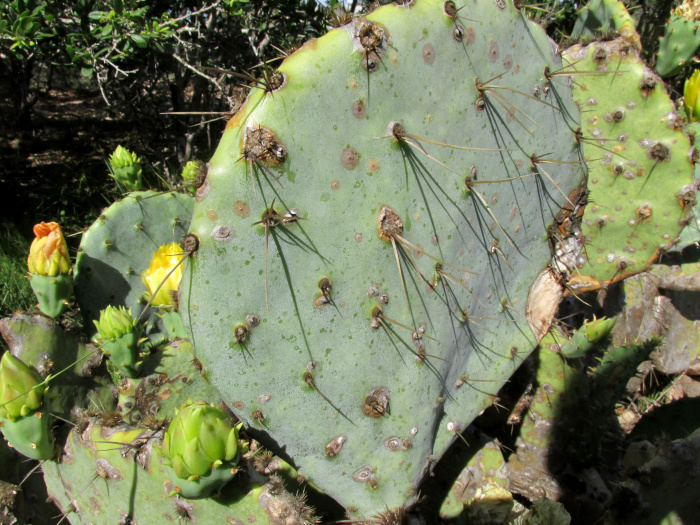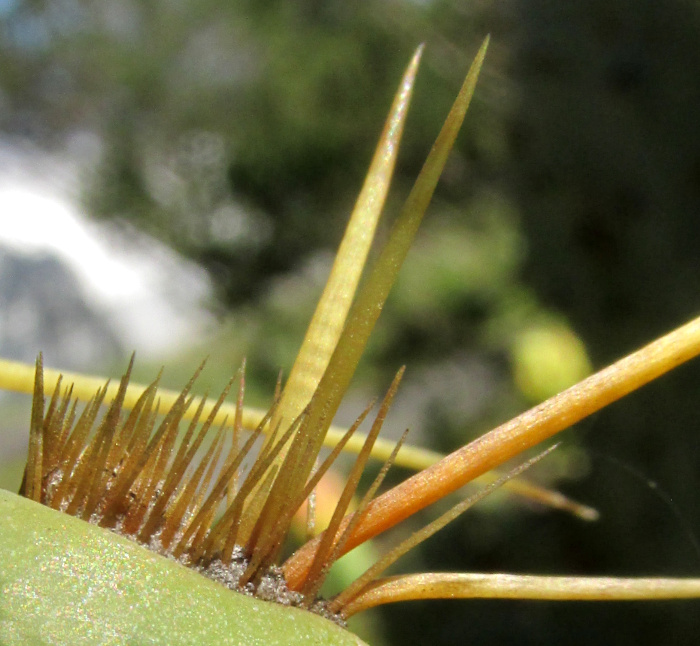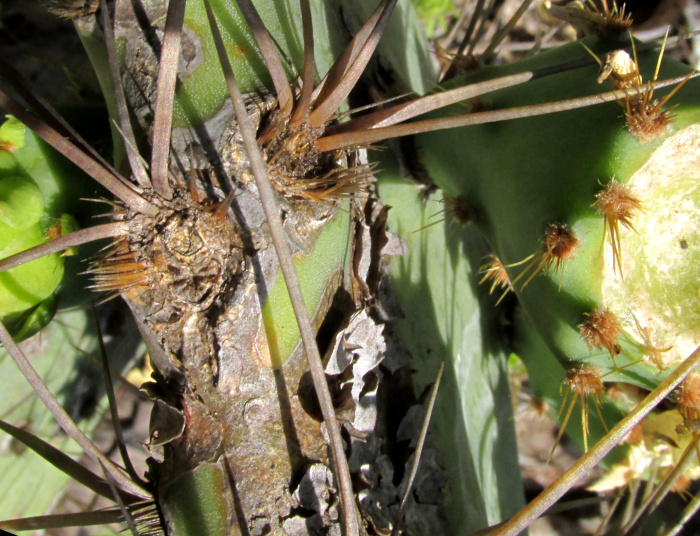Excerpts from Jim Conrad's
Naturalist Newsletter
Issued May 22, 2021 from the Dry Frio Valley in northern Uvalde County, southwestern Texas, on the southern border of the Edwards Plateau; elevation ~1750m (~5750 ft); N29.62°, W99.86°; USA
TULIP PRICKLYPEAR
My general impression has been that the pricklypear species commonly occurring atop our limestone hills -- one profiled above -- is different from the very similar ones on the alluvial valley floor among Ashe Junipers and grasses. Here's a closer look at the ones on the valley floor, a typical one shown near my camp below:

That picture shows a cactus with mostly bright yellow blossoms, only the old ones and opening blossoms pinkish. The hilltop cactus profiled above was mostly pinkish-cream with a few weakly yellow flowers. However, flower color often isn't too dependable, so now I've "done the botany" on other details. First, pad shape is the same, the spines are alike, but the valley cacti have paler spines than those atop hills, as seen below:

The glochids are arranged similarly but, again, they're paler than the hill ones.

Glochids are such fine field marks and I got another good picture of them, along with the much-bent, flat-based thorns, so here that is:

This is OPNTIA PHAEACANTHA, often called the Tulip or Desert Pricklypear. It's commonly seen across the southwestern US into northern Mexico. It's been divided into several varieties and hybridizes with other pricklypear species.
The fruit can be eaten raw, cook or dried for later use. Indigenous Americans were known to dry the seeds, parch and ground them into meal, which was added to flour for making a kind of nutritious biscuit or cake.